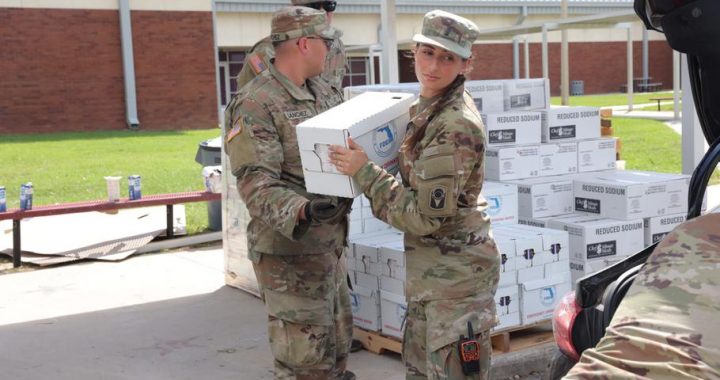Navy reduces child care waitlist but needs workers to keep up momentum
4 min read
The Navy has reduced its waitlist for child care in the past two years by about 3,200 children by increasing fee assistance for off-base day cares and in-home nannies, revitalizing unused space to be safe for children and by beefing up employee incentives to get more workers on board.
The Navy waitlist for child care has been reduced by more than 3,200 kids across the service in the last two years, but officials said they need more workers to keep making progress in providing adequate facilities and services for all families.
The service has approached the problem in several ways, including an increase in the fee assistance for off-base day cares and in-home nannies, revitalizing unused space to be child-safe and beefing up employee incentives to get more workers on board, according to the Commander, Navy Installations Command, or CNIC, the headquarters responsible for managing bases and quality-of-life programs.
“It’s something that’s improving, but we continue to try to look for solutions to make it even better,” said Command Master Chief Jason Dunn of CNIC.
The coronavirus pandemic, which began in March 2020, strained child care facilities across the U.S., and the Navy and other military service branches felt that pinch, said Leslie Gould, director of Fleet and Family Readiness Programs for CNIC. Temporary closures in the early months of the pandemic caused many civilian child care businesses to permanently shut down and many of those workers to leave the field, she said.
Now, the Navy is struggling to attract enough workers to operate its facilities at capacity in some places and finding it difficult to locate space for kids off base in day cares that meet the Defense Department’s standards. However, the immediate solutions put in place are making a difference, Gould said.
In December 2020, the Navy had its nationwide child care waitlist reached nearly 9,000 children in need of immediate care. That waitlist now stands at about 5,576, Gould said. Meanwhile, construction is ongoing to complete new facilities that have been approved by Congress in the regions where the Navy has a high density of sailors, such as San Diego and Norfolk, Va.
“Getting that waitlist down and getting those children in care is the No. 1 priority,” Gould said. “It all has to happen at the same time to mitigate this waitlist. It’s an aggressive strategy.”
The number of kids in on-base facilities has stayed relatively the same, she said, because families have been able to utilize some other off-base and in-home care options that have helped reduce the waitlist as well. That includes raising the monthly fee assistance for approved civilian day cares from $1,500 to $1,700.
At Naval Base Point Loma in San Diego, child care facilities are operating at 70% capacity because there are not enough employees, said Tamara Lo-Ray, director of Child and Youth Programs at the base. To fill the gaps, they’ve been hosting job fairs where they tout the Navy’s new hiring incentives, which seem to be helping, she said.
There are a $500 signing bonus and a retention bonus of $2,250 that are making an impact, Lo-Ray said. The Navy also offers a starting wage of $23.24 an hour in San Diego. But the employee discount on their own child’s care is what is really moving the needle on hiring — 50% off for the first child and 20% for additional children.
“It’s a huge difference because outside the fence line child care is extremely expensive,” Lo-Ray said. There’s also the added savings that children at Navy child care facilities have their meals, including infant formula, provided. Parents only must drop kids off with diapers and wipes.
The Defense Department regulates the cost of child care at its facilities based on a family’s income. It ranges from about $300 to $700 a month.
Lt. Cmdr. Jasmine Bee said when she found out she was pregnant, she immediately applied to get her baby on the Navy’s list for child care in the San Diego area because she had heard it could be a long process. Getting into a military child-development center instead of a civilian day care was important to her because of the long hours that she works as a human resource officer. Her husband, Lt. Lamar Bee, is a surface warfare officer and has a schedule that’s even more unpredictable, she said.
Her daughter Naomi, now 3 years old, has been attending a Navy day care at Point Loma since she was 8 weeks old.
“They’re fully flexible, and they’re willing to support the mission of the Navy,” Bee said. “I know that the [child-development center] is going to take care of her.”
The Navy has found unused space at other bases to convert into child care facilities, including at Naval Air Station Patuxent River, Md., and at Naval Base Kitsap, Wash. In Patuxent River, the Navy converted an old conference center into a youth center.
“That’s a really important point of how far we’re looking outside the box and getting creative,” Dunn said. “We’re looking at any facility that we can make to code for a [child-development center] and get certified providers in there, we’re doing those kinds of things.”





